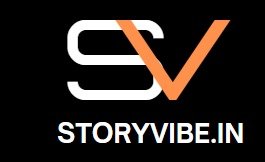1. Introduction to Language Models
Language models are the cornerstone of artificial intelligence (AI), enabling machines to understand, interpret, and generate human language. From virtual assistants like Siri to advanced chatbots like ChatGPT, these models power a wide range of applications. However, the emergence of Large Language Models (LLMs) has revolutionized the field, overshadowing traditional Natural Language Models (NLMs). This guide delves into their differences, explores the technologies behind DeepSeek and OpenAI, and explains why LLMs are dominating industries like healthcare, finance, and digital marketing.
Table of Contents

2. What Are Large Language Models (LLMs)?
Large Language Models (LLMs) are advanced AI systems trained on vast datasets to process and generate text with human-like fluency. Unlike earlier models, they leverage transformer architecturesand self-attention mechanisms to understand context over long sequences of text.

2.1 Architecture of LLMs
The transformer architecture, introduced in Google’s 2017 paper “Attention Is All You Need”, is the backbone of modern LLMs. Key components include:
- Self-Attention Layers: Identify relationships between words in a sentence (e.g., connecting “it” to the correct noun in a paragraph).
- Feed-Forward Networks: Process data in parallel, enabling faster training compared to sequential models like RNNs.
- Positional Encoding: Adds information about word order to the input data.
For example, GPT-4 (OpenAI’s flagship LLM) uses a decoder-only transformer to generate text autoregressively, predicting one word at a time.
2.2 Training Process and Scale
LLMs undergo two phases:
- Pre-training: Trained on terabytes of text (books, websites, code repositories) to learn grammar, facts, and reasoning patterns.
- Example: GPT-3 was trained on 45TB of data, including Common Crawl, Wikipedia, and books.
- Fine-tuning: Tailored for specific tasks (e.g., medical diagnosis) using smaller, high-quality datasets.
The sheer scale of LLMs—billions to trillions of parameters—enables them to generalize across tasks, from writing poetry to debugging code.
Keywords: Transformer architecture, GPT-4, pre-training, fine-tuning
3. Traditional Natural Language Models (NLMs) Explained
Before LLMs, NLMs relied on simpler architectures and manual engineering. Let’s break down their evolution:
3.1 Rule-Based Systems
Early NLMs like ELIZA (1966) used hand-crafted rules to mimic human conversation. For example:
python
Copy
if "mother" in user_input:
response = "Tell me more about your family."
While groundbreaking at the time, these systems lacked adaptability and couldn’t handle complex queries.

3.2 Statistical and Early Neural Models
- N-grams: Predicted the next word using frequency statistics (e.g., “New York” is more likely than “New Apple”).
- Hidden Markov Models (HMMs): Used in speech recognition to model sequential data.
- RNNs/LSTMs: Processed text sequentially but struggled with long-term dependencies.
Limitations:
- Required extensive feature engineering.
- Performed poorly on tasks requiring contextual understanding (e.g., sarcasm detection).
Keywords: Statistical NLP, RNNs, LSTMs, rule-based systems
4. LLM vs. NLM: Key Differences and Evolution
4.1 Technical Architecture Comparison
| Feature | LLMs | NLMs |
|---|---|---|
| Architecture | Transformer-based with self-attention | RNNs, LSTMs, or rule-based systems |
| Training Data | Terabytes of diverse text (e.g., books, code) | Small, domain-specific datasets |
| Parameter Count | 1 billion to 1.7 trillion (GPT-4) | Thousands to millions |
| Context Window | Up to 32,000 tokens (GPT-4 Turbo) | Rarely exceeded 512 tokens |
| Adaptability | Multi-task, zero-shot learning | Single-task focused |
Example:
- LLM: ChatGPT can draft a legal contract, debug Python code, and explain quantum physics in the same session.
- NLM: A sentiment analysis model classifies tweets as “positive” or “negative” but can’t generate original content.

4.2 Performance in Real-World Tasks
LLMs outperform NLMs in:
- Translation: GPT-4 supports 50+ languages with minimal fine-tuning.
- Summarization: Condense 10-page reports into 3 sentences while retaining key points.
- Creativity: Generate marketing slogans, blog outlines, or fictional stories.
Case Study:
A 2023 study by Stanford University found that GPT-4 outperformed human experts in diagnosing rare medical conditions by analyzing patient histories.
Keywords: LLM vs NLM, transformer vs RNN, zero-shot learning
5. DeepSeek’s Proprietary AI Model
DeepSeek is a rising star in domain-specific AI, focusing on industries like healthcare, law, and finance.
5.1 Architecture and Training
- Architecture: Likely a sparse transformer variant optimized for speed and accuracy.
- Training Data: Combines public datasets (e.g., PubMed, legal databases) with proprietary industry data.
- Hallucination Mitigation: Implements fact-checking layers to reduce errors in outputs.
5.2 Industry-Specific Applications
- Healthcare: Analyzes patient records to suggest personalized treatment plans.
- Finance: Predicts market trends using earnings reports and news articles.
- Legal: Drafts contracts and identifies loopholes in legal documents.

Example:
DeepSeek reduced a law firm’s contract review time by 70% by automating clause analysis.
Keywords: DeepSeek AI, domain-specific LLMs, legal AI
6. OpenAI’s ChatGPT and GPT Models
OpenAI’s Generative Pre-trained Transformer (GPT) series has set the benchmark for LLMs.
6.1 GPT-3.5 to GPT-4: Advancements
- GPT-3.5: 175 billion parameters, excelling in conversational tasks.
- GPT-4: 1.7 trillion parameters with multimodal capabilities (text and image inputs).
- Reinforcement Learning from Human Feedback (RLHF): Aligns outputs with ethical guidelines.
6.2 Real-World Use Cases
- Customer Support: Resolves 80% of queries without human intervention (e.g., Shopify’s AI assistant).
- Education: Tutors students in math and science via interactive Q&A.
- Content Creation: Generates SEO-optimized blog drafts in minutes.

Case Study:
The coding platform GitHub Copilot, powered by GPT-4, assists developers by auto-completing 30% of their code.
Keywords: GPT-4, RLHF, ChatGPT use cases
7. SEO and Content Creation with LLMs
LLMs like ChatGPT are transforming SEO workflows:
7.1 Keyword Optimization Strategies
- Cluster Content: Generate articles targeting keyword groups (e.g., “LLM applications” + “LLM limitations”).
- Semantic SEO: Use LLMs to identify related terms (e.g., “transformer architecture” for “LLM vs NLM”).
7.2 Automating SEO Workflows
- Meta Descriptions: Create 100+ meta descriptions in seconds.
- Internal Linking: Auto-suggest relevant internal links based on content.
Pro Tip: Pair LLMs with tools like SurferSEO or Ahrefs for data-driven optimizations.
Keywords: SEO content, AI writing tools, semantic SEO
8. Ethical Challenges and Mitigation
8.1 Bias and Fairness
LLMs often reflect biases in training data. For example:
- A 2021 study found GPT-3 associated “nurse” with female pronouns 78% of the time.
- Mitigation: Tools like DebiasMitigator reweight training data to reduce stereotypes.
8.2 Environmental Impact
- Training GPT-3 consumed 1,287 MWh of energy—equivalent to 120 U.S. households annually.
- Solutions:
- Use renewable energy for data centers.
- Adopt model quantization to shrink LLM size.
Keywords: AI ethics, carbon footprint, bias mitigation
9. Future Trends in Language Models
- Smaller, Efficient Models: Techniques like LoRA (Low-Rank Adaptation) reduce computational costs.
- Multimodal AI: Models like GPT-4V process text, images, and audio.
- Regulation: The EU AI Act mandates transparency in AI-generated content.
10. FAQs (Optimized for Featured Snippets)
Q: What is the main difference between LLMs and NLMs?
A: LLMs use transformer architectures and massive datasets for multitasking, while NLMs rely on older models like RNNs for narrow tasks.
Q: Does DeepSeek use GPT-4?
A: No, DeepSeek uses a proprietary LLM optimized for industries like healthcare and finance.
Q: Can LLMs replace SEO writers?
A: They assist with drafting but lack human creativity for storytelling and brand voice.
Q: Are LLMs biased?
A: Yes, but tools like IBM’s AI Fairness 360 help mitigate biases.
Q: Is ChatGPT free?
A: ChatGPT offers a free tier (GPT-3.5) and a paid ChatGPT Plus plan (GPT-4).
11. Conclusion
LLMs like DeepSeek and ChatGPT have redefined AI’s potential, outpacing NLMs in scalability, adaptability, and real-world impact. While challenges like bias and environmental costs persist, advancements in efficiency and regulation promise a future where LLMs drive innovation across industries. Businesses adopting these tools today will lead the AI revolution tomorrow.




Your mode of describing everything in this paragraph is truly nice, every one be capable
of effortlessly be aware of it, Thanks a lot https://www.coupercroiser.com/service-de-tapis-corporatif-sur-mesure/
Your means of telling the whole thing in this post is truly fastidious, every one can simply know it, Thanks a lot https://www.coupercroiser.com/service-de-tapis-corporatif-sur-mesure/
Your way of explaining the whole thing in this post is really nice, every one be capable of effortlessly understand it,
Thanks a lot https://vegtech.ca/en/shop/